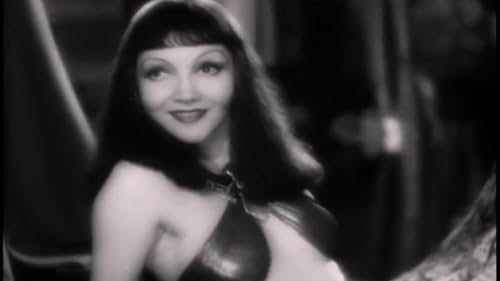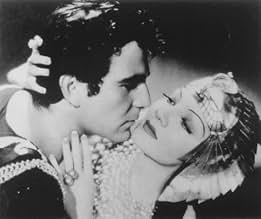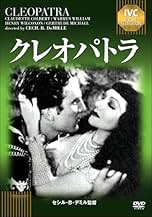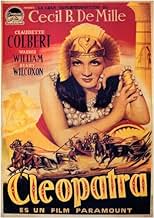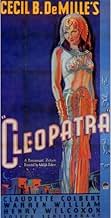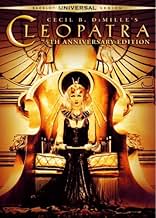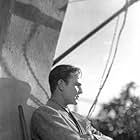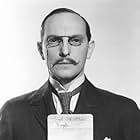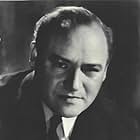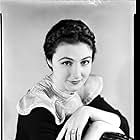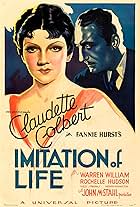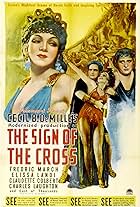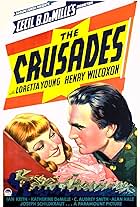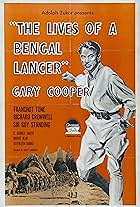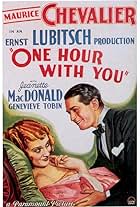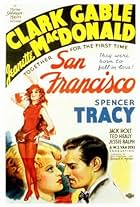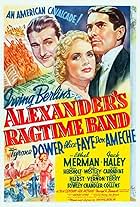IMDb RATING
6.8/10
4.7K
YOUR RATING
The man-hungry Queen of Egypt leads Julius Caesar and Marc Antony astray, amid scenes of DeMillean splendor.The man-hungry Queen of Egypt leads Julius Caesar and Marc Antony astray, amid scenes of DeMillean splendor.The man-hungry Queen of Egypt leads Julius Caesar and Marc Antony astray, amid scenes of DeMillean splendor.
- Won 1 Oscar
- 2 wins & 4 nominations total
Ian Maclaren
- Cassius
- (as Ian MacLaren)
Ferdinand Gottschalk
- Glabrio
- (scenes deleted)
Jayne Regan
- Lady Vesta
- (as Jane Regan)
Storyline
Did you know
- TriviaWhen Cecil B. DeMille was in pre-production on this film, he asked to screen the original Cleopatra (1917) with Theda Bara. No prints could be found in Los Angeles, so a copy was borrowed from the Fox office in New York. After DeMille viewed the film, it was sent back to Little Ferry, NJ. On 7/9/37 a fire at the storage facility destroyed almost all of Fox's known archived prints, most likely including "Cleopatra". The screening for DeMille's company, on 2/15/34, may have been the last time anyone saw the legendary film. However, on September 14, 2023, 42 seconds of extremely rare footage of the final act in which Cleopatra prepares to die as the Roman Legion marches upon her palace was procured from a 1920's toy film projector and presented on YouTube.
- GoofsThe main doors to Cleopatra's chambers have modern metal hinges.
- Alternate versionsThe movie was released in Germany with German direction by Kurt Bleines and German dialogue by Helmut Brandis and Helena von Fortenbach.
- ConnectionsEdited into Catalogue of Ships (2008)
Featured review
Since I am a fan of epics, particularly ancient and medieval ones, I had been looking for this movie for a long time. The name of Cecil B DeMille is probably most associated with his magnificent remake of THE TEN COMMANDMENTS (1956) where he made a total use of his imagination, where, as one of the movie critics said, "lavish sets and grandeur reach its peak." There are also people who love his silent THE KING OF KINGS (1927). DeMille's films do not seem much dated. With these expectations, I bought CLEOPATRA (1934), sat in my chair on one of the frosty evenings and started to watch. The movie involved me so much that after 20 minutes, I had to see it at least to the half, at the half, I admit an undeniable need for seeing it till the end.
The story of Cleopatra has been put on screen several times. From Helen Gardner in 1912, Theda Bara in 1917 (presumed lost) to Claudette Colbert here. The impersonation of Cleopatra was later followed by the great performances of Vivien Leigh in CAESAR AND CLEOPATRA (1945) and, of course, Liz Taylor in ultra long CLEOPATRA by Joseph L Mankiewicz, which had been the only Cleopatra film I had seen before this one. From the very beginning of watching DeMille's film, I was astonished by significant virtues of this high camp production, but realized fully that this film cannot be compared to any other film about Cleopatra.
HUMOR: Maybe this point will seem strange to mention at first, but what mostly struck me in this film was how excellent combination of history and humor it is. The script is full of very amusing contexts that lead a viewer to a wonderful atmosphere. "Together we could conquer the world," says Cleopatra to Caesar on one moonlit night, to which the Roman leader replies: "Nice of you to include me!" "I am dressed to allure you, Antony," says Cleopatra to her new Roman lover. Or after the moment when the half naked girls dance at the ox, Cleopatra says to Mark: "I wish you could see your face now. I'd have more chance with a stone wall." I know that some of these may seem dated, but they make a perfect sense in the scenes alone.
GREAT CAST: Claudette Colbert, though better known for playing in comedies, impersonated two historical figures on screen twice at DeMille's: Poppaea and Cleopatra. While her Roman empress was an object of lust and desire, her queen of the Nile is full of elegance and magnificence. In all these sophisticated fabulous costumes and gowns, she plays Cleopatra so well that she should have won an Oscar for this role. Unfortunately, Cleopatra lost to Ellie Andrews in IT HAPPENED ONE NIGHT. The other great star of the film is Henry Wilcoxon who plays Mark Antony. He gives a marvelous, one of the best performances ever seen in historical epics. Pride, irony, love, and honor are presented by him so memorably that you will never forget this performance. I dare claim that he is a better Antony than Richard Burton in CLEOPATRA (1963). The third star of the film, in my opinion, is not Warren William as Caesar, but C.Aubrey Smith as a Roman soldier Enobarbus. I saw him in several roles, including DeMille's THE CRUSADES (1935), but here, he does an extraordinary job combining his role with honor, pride and wit. However, feminists... be careful! There are slogans said by Enobarbus that are unacceptable! Ian Keith, a mainstay of historical epics, does not give a very remarkable performance as Octavian. He is not bad; however, most historians imagine Octavian differently. Warren William is not bad as Caesar but indeed not the best.
SPECTACULAR MOMENTS: The whole movie is filled with DeMillean splendor. Scene by scene leaves a gorgeous experience for the fans of lavish sets. But three scenes are a must see: first, the royal barge which is elegantly setting off when Cleopatra and Antony are making love (flower petals, dancing girls, enormous sets); second, the gowns and art direction when Cleopatra awaits Caesar on the day of his tragic death (every movement she makes in a gorgeous gown is worth admiration); third, the final shot, one of the most memorable death scenes in cinema ever (this one is hard to describe, it must be seen)! Moreover, Cleopatra's entrance to Rome, which was the moment that the movie with Liz Taylor boasted so much, is more natural in DeMille's. Here, we get the most realistic picture of Roman streets instead of a huge Sphynx statue and rather a parade than an entrance.
HISTORY: The movie is not a very good historical lesson. In this respect, Liz Taylor version supplies you with more knowledge of history. Nevertheless, we all must take into account two aspects: the period the film was made in (the 1930s required more of entertainment than of facts) and by whom it was made. It was Cecil B DeMille, a spectacle lover of crowds, gowns, peacocks, leopards, and lavish sets (late Zygmunt Kaluzynski, a Polish movie critic, once joked that when DeMille was making THE KING OF KINGS, others feared that he would entail 24 Apostles because 12 is not spectacular enough). Therefore, it is important to watch this film as a part of Cecil DeMille.
All in all, it is absolutely right to say that it is not TEN COMMANDMENTS, KING OF KINGS, or SIGN OF THE CROSS that define DeMille most. These are absolutely gorgeous films in all respect. However, the film that gives the picture of his soul and talent is CLEOPATRA. It is, however, not only an unforgettable experience of DeMille's fans, but for all fans of historical epics, Hollywood elite of the 1930s, and love stories. It is simply a must see and a must release on DVD! Though more than 70 years old, some films never fade... it is, undeniably, CLEOPATRA. 9/10
The story of Cleopatra has been put on screen several times. From Helen Gardner in 1912, Theda Bara in 1917 (presumed lost) to Claudette Colbert here. The impersonation of Cleopatra was later followed by the great performances of Vivien Leigh in CAESAR AND CLEOPATRA (1945) and, of course, Liz Taylor in ultra long CLEOPATRA by Joseph L Mankiewicz, which had been the only Cleopatra film I had seen before this one. From the very beginning of watching DeMille's film, I was astonished by significant virtues of this high camp production, but realized fully that this film cannot be compared to any other film about Cleopatra.
HUMOR: Maybe this point will seem strange to mention at first, but what mostly struck me in this film was how excellent combination of history and humor it is. The script is full of very amusing contexts that lead a viewer to a wonderful atmosphere. "Together we could conquer the world," says Cleopatra to Caesar on one moonlit night, to which the Roman leader replies: "Nice of you to include me!" "I am dressed to allure you, Antony," says Cleopatra to her new Roman lover. Or after the moment when the half naked girls dance at the ox, Cleopatra says to Mark: "I wish you could see your face now. I'd have more chance with a stone wall." I know that some of these may seem dated, but they make a perfect sense in the scenes alone.
GREAT CAST: Claudette Colbert, though better known for playing in comedies, impersonated two historical figures on screen twice at DeMille's: Poppaea and Cleopatra. While her Roman empress was an object of lust and desire, her queen of the Nile is full of elegance and magnificence. In all these sophisticated fabulous costumes and gowns, she plays Cleopatra so well that she should have won an Oscar for this role. Unfortunately, Cleopatra lost to Ellie Andrews in IT HAPPENED ONE NIGHT. The other great star of the film is Henry Wilcoxon who plays Mark Antony. He gives a marvelous, one of the best performances ever seen in historical epics. Pride, irony, love, and honor are presented by him so memorably that you will never forget this performance. I dare claim that he is a better Antony than Richard Burton in CLEOPATRA (1963). The third star of the film, in my opinion, is not Warren William as Caesar, but C.Aubrey Smith as a Roman soldier Enobarbus. I saw him in several roles, including DeMille's THE CRUSADES (1935), but here, he does an extraordinary job combining his role with honor, pride and wit. However, feminists... be careful! There are slogans said by Enobarbus that are unacceptable! Ian Keith, a mainstay of historical epics, does not give a very remarkable performance as Octavian. He is not bad; however, most historians imagine Octavian differently. Warren William is not bad as Caesar but indeed not the best.
SPECTACULAR MOMENTS: The whole movie is filled with DeMillean splendor. Scene by scene leaves a gorgeous experience for the fans of lavish sets. But three scenes are a must see: first, the royal barge which is elegantly setting off when Cleopatra and Antony are making love (flower petals, dancing girls, enormous sets); second, the gowns and art direction when Cleopatra awaits Caesar on the day of his tragic death (every movement she makes in a gorgeous gown is worth admiration); third, the final shot, one of the most memorable death scenes in cinema ever (this one is hard to describe, it must be seen)! Moreover, Cleopatra's entrance to Rome, which was the moment that the movie with Liz Taylor boasted so much, is more natural in DeMille's. Here, we get the most realistic picture of Roman streets instead of a huge Sphynx statue and rather a parade than an entrance.
HISTORY: The movie is not a very good historical lesson. In this respect, Liz Taylor version supplies you with more knowledge of history. Nevertheless, we all must take into account two aspects: the period the film was made in (the 1930s required more of entertainment than of facts) and by whom it was made. It was Cecil B DeMille, a spectacle lover of crowds, gowns, peacocks, leopards, and lavish sets (late Zygmunt Kaluzynski, a Polish movie critic, once joked that when DeMille was making THE KING OF KINGS, others feared that he would entail 24 Apostles because 12 is not spectacular enough). Therefore, it is important to watch this film as a part of Cecil DeMille.
All in all, it is absolutely right to say that it is not TEN COMMANDMENTS, KING OF KINGS, or SIGN OF THE CROSS that define DeMille most. These are absolutely gorgeous films in all respect. However, the film that gives the picture of his soul and talent is CLEOPATRA. It is, however, not only an unforgettable experience of DeMille's fans, but for all fans of historical epics, Hollywood elite of the 1930s, and love stories. It is simply a must see and a must release on DVD! Though more than 70 years old, some films never fade... it is, undeniably, CLEOPATRA. 9/10
- marcin_kukuczka
- Nov 19, 2005
- Permalink
Details
- Runtime1 hour 40 minutes
- Color
- Aspect ratio
- 1.37 : 1
Contribute to this page
Suggest an edit or add missing content


